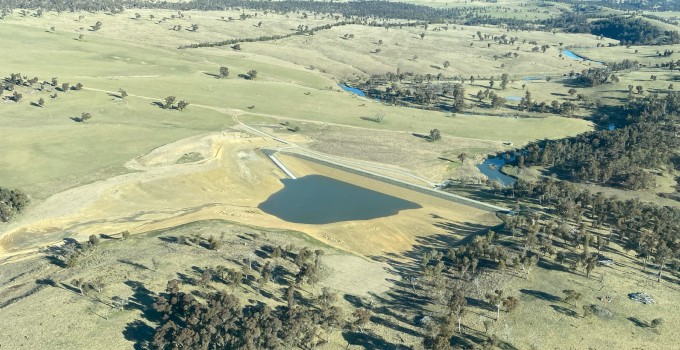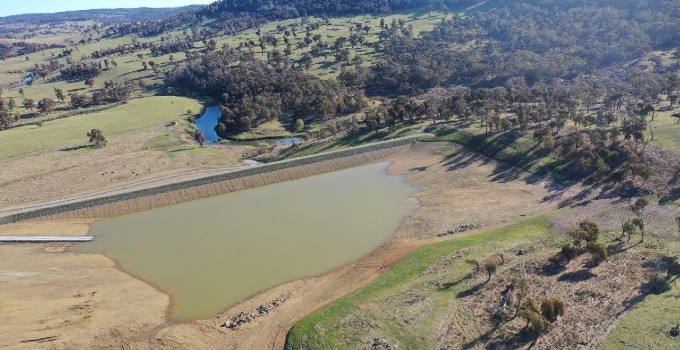Walcha Off-Creek Storage – A Boost to Climate Resilience

Client: Walcha Regional Council
Location: New South Wales
Date: 2020-21
Designing a new dam to secure the long-term supply of drinking water and fire-fighting water for a drought-prone Australian town
Background
The regional township of Walcha in the Northern Tablelands of New South Wales has regularly faced water shortages and has been severely affected by drought. The town was serviced by only one small off-creek water storage, which meant that stringent water restrictions were needed during periods of drought. The regional council, supported by federal government funding, decided to invest in a vital piece of new infrastructure to improve Walcha’s water reliability and security, as well as delivering social benefits to the community.
Entura was engaged as a sub-consultant to Hunter H2O to complete the detailed design, planning and environmental approvals for a new 300 ML off-creek storage on a small tributary of the MacDonald River. Entura supported this project with a multidisciplinary team drawing on the expertise of our dam design, hydrology and hydraulics, planning and environmental specialists.
Solution
Unable to visit the site during COVID-19 travel restrictions, our environmental and planning specialists maintained progress on the Preliminary Environmental and Planning Overview (PEPO) through virtual meetings and workshops with our client and by studying databases and existing literature to determine potential terrestrial, aquatic and regulatory constraints that may affect the design of the new off-creek storage. During this period of uncertainty, we kept the regulators, client and project team up to date with the progress of the project and with any regulatory changes affecting the project. The final Review of Environmental Factors (REF) summarised all the relevant information for the key stakeholders to take the project through its lifecycle.
For the dam design, our team analysed the results of the onsite geotechnical investigations to assess the ground conditions, and designed a zoned earthfill embankment dam that would best suit the location and would use local materials. Soil removed from the impounded area was used to create the embankment, with sand sourced from a local quarry. Minimising the amount of material imported to the site lessens road transport, avoiding its associated costs and emissions. The design also made it possible to engage local contractors to construct the project.
Despite the ‘low’ consequence category of the dam, the presence of another upstream dam increased the potential risk of cascading dam failure. Taking into account current conditions as well as predicted climate change scenarios, our hydraulics and hydrology team performed a flood hydrology study, dam failure modelling and consequence category assessment for the new dam. We also modelled potential storm-related water levels to support a safe cofferdam design and construction. The hydrological modelling dictated the size of spillway required and the amount of freeboard necessary.
Our team designed the project for robustness, resilience and to accommodate the possibility that conditions and dam requirements may change over time. For example, we considered what future upgrades may be required and made allowances for a greater capacity outlet works in the future, and we undertook seismic analysis (not currently required for a ‘low’ consequence category dam) so that the dam could meet more stringent future requirements if these were to be applied over its design life.
Services provided
- environmental studies
- planning support
- hydraulic and hydrological modelling
- detailed dam design
Outcome
The dam has now been constructed and was officially opened in December 2023.
It was satisfying to be able to apply our specialised knowledge of dam design and our integrated services to support this project, which is of great significance to the region and its community as it will provide a more secure source of drinking water and fire-fighting water. This is a significant boost to the confidence of the community to face future climate risks.





